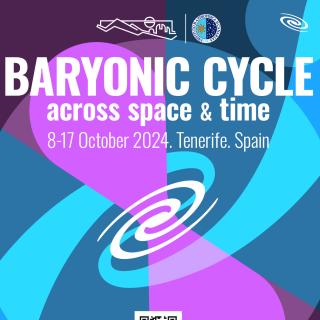la Laguna, Tenerife
The formation and evolution of galaxies is one of the most important topics under study in modern astrophysics. The advent of current and future observing facilities such as ALMA or the Extremely Large Telescopes (ELTs) would allow, among other subjects, tackling detailed studies of hundreds to thousands of faint, distant galaxies. However, the target selection will be done using the current facilities in 8-10m class telescopes on Earth, such as the Gran Telescopio CANARIAS (GTC), and space telescopes, such as EUCLID or the JWST. This school has been aimed at providing PhD students and recent postdocs with the tools and knowledge needed to fruitfully exploit the next generation of large telescopes, at optical, infrared or radio wavelengths, and to be prepared for the design and exploitation of big extragalactic surveys.
The SO School, organized by the Instituto de Astrofísica de Canarias (IAC) and the Universidad de La Laguna (ULL), has been hold at the Faculty of Physics of the ULL from June 16th to 20th, 2014. The school involved lectures from 10 distinguished scholars, and it was attended by 25 students and postdocs, about half of them from Spain, and the rest coming from other countries (Italy, Germany, Switzerland, United Kingdom and China).
The school included not only theoretical lessons, but also hand-on tutorials that took place in the computer center of the Astrophysics Department at the Faculty of Physics of the ULL. “As an introduction, the lessons started by describing the types of extragalactic surveys and the current and future surveys. Its application to the studies of high redshift galaxies and their formation and evolution, together with the analysis of large scale structures in the Universe, including clusters of galaxies, was dealt with in detail. Finally, the application of this kind of surveys for the study of the Galactic Halo and the Local Group were analyzed as well.” – explains Jordi Cepa, IAC researcher and scientific organizer of the school.
The tutorials included the statistical analysis of large samples of galaxies, and the danger of some selection effects that could be generated by the sample selection technique. Also, the procedure to obtain photometric catalogues from images, disentangling galaxies from stars, and performing morphological classifications were studied. Finally, the way to derive photometric redshifts from the catalogues, and the accuracy and the limitations of this technique closed the tutorials.
The school has been partly financed by the Severo Ochoa program.
More information at: Exploiting extragalactic surveys in the era of large telescopes



